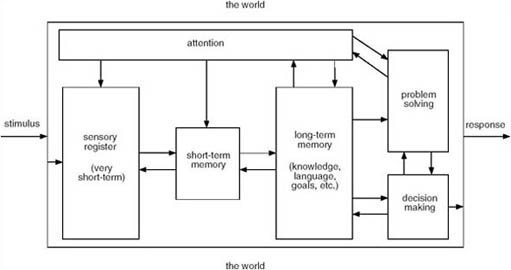3.3 Appreciating your basis for understanding
In my experience, the explanation that Fell and Russell suggest (i.e. that we each construct our own version of reality and therefore cannot be an objective observer; which in turn means we have to take responsibility for our observations and explanations) is challenging for many people. When I attend workshops where these ideas are expressed for the first time, people often become angry. You may be able to identify with them. If so, please try to use your discomfort productively for your own learning. It is profoundly disturbing to have the basis for your understanding of the world challenged. It seems important to do it, however, because in my experience, it gives access to new and practical explanations. I have already acknowledged you may find some explanations dissatisfying but, in the end, that is all they are – just explanations. If you don't find them satisfying you need not accept them. Just the same, I invite you to look at them for a while before dismissing them.
Activity 38
Responding to the distinctions about the observer.
Find a way of expressing your emotional and rational responses to the material in ‘How the observer has come into focus’ about the observer. One way could be to use your Learning Journal to record these.
Relatively recent findings in cognitive science (e.g. colour perception), which are not widely appreciated, challenge some widely held ‘common sense’ notions. Take information for example. Many people assume that individuals would be better decision makers if they had better information. But how do we gain this information?
Since about 1950, the prevailing view in cognitive science has been that the nervous system picks up information from the environment and processes it to provide a representation of the outside world in our brain. This has been described as the information-processing model of the mind (Figure 30). We now know that the nervous system is closed, without inputs or outputs, and its cognitive operation reflects only its own organisation. Because of this, we are imposing our constructed information – or our meaning – on to the environment, rather than the other way around. This is much like Figure 26, except this time the pattern of the planet is contained in our nervous system rather than the lens of the telescope. It implies our interactions with the ‘real world’, including other people, can never be deterministic; there are no unambiguous external signals.

Instead, our interactions consist of non-specific triggers, which we each interpret strictly according to our own internal structural dynamics (Fell and Russell, 2000). This has profound implications for how human communication is understood – it is not signal or information transfer but a process of meaning construction much as depicted in Figure 31 (but note, it is never shared as this cartoon depicts). Within this line of reasoning it is argued that we human beings exist, and are realised as such, in conversations. It is not that we use conversations; we are a flow of conversations. It is not that language is the home of our being but that the human being is a dynamic manner of being in language, not a body, not an entity that has an existence independent of language, and which can then use language as an instrument for communication.
For example when the word nature is used in modern Western discourse it is often used in such a way that leads us to live as if we human beings are outside nature. The concept ‘nature’ thus structures who we are and what we do. In some indigenous, non-western languages the term or concept does not exist. Obviously, this view has implications for what we mean by communication within systems practice.

The notion that we exist in language and co-construct meaning in human communication, much as dancers co-construct the tango or samba on the dance floor, suggests the need to consider on what basis we might accept that understanding has occurred. Asking this question is like opening a Pandora's box. It raises all sorts of questions that we take for granted, like: What is learning? What is understanding? How do we know what we know? Some of these questions are addressed in the next subsection.
